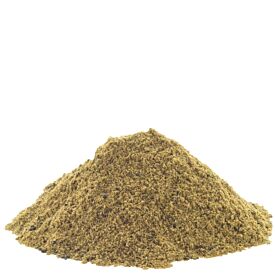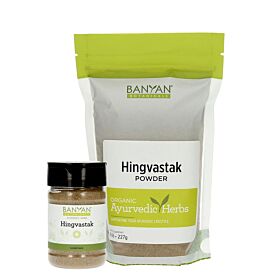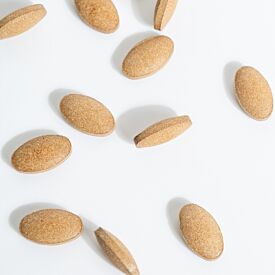Spring for Vata

Vata is not typically disturbed by the heavy, slow, dampness of the spring. In fact, this is probably one of your favorite seasons, and—in many ways—springtime is very balancing for you. So, the challenge is not to counter the negative influences of this season but to fully harness the benefits it has to offer you.
The following modifications to a typical springtime routine are designed specifically to support your constitution. If you are not familiar with the basic tenets of a traditional springtime routine, you might benefit from first reading Banyan's more general Ayurvedic Guide to Spring.
Foods to Favor
Early in the spring, if it is still at all cold or dry, you will want to continue eating heavier, oilier, more substantive foods—more like those recommended for vata during the winter. However, as the season warms up, you can gradually shift to lighter, more cleansing foods.
Ultimately, you’re looking for a balance between the heavy, oily, nutrient-rich foods that calm vata, and the light, dry fare that will cleanse and refresh your system this spring.
- Consider eating kapha-balancing foods that are prepared in a vata-balancing manner.
- Enjoy lots of fresh fruits and vegetables, but favor cooked over raw choices whenever possible.
- Garnish veggies with ghee or oil, eat them warm, and allow yourself adequate snacks.
- You may also need a more substantial breakfast than most this spring.
- Transition from a winter to spring diet very gradually—mirroring the behavior of your local climate—and supplement your meals with some more substantive fruits, vegetables, and grains like avocado, squash, quinoa, or basmati rice.
- Other foods to favor include artichokes, asparagus, beets, brussels sprouts, carrots, chilies, fresh corn, green beans, leeks, mustard greens, okra, onion, peppers, cooked spinach, honey, amaranth, miso, mung beans, and toor dal.
- In general, you’ll want to ease your dairy consumption, but you can probably tolerate an occasional serving of milk (served warm) or cottage cheese, and you should be able to freely enjoy ghee throughout the season.
Acceptable Seasonal Indulgences
This is the one time of year that lighter, drier foods may be less aggravating for your system. Though it will be best to prepare most of your meals in a vata-balancing way, this is probably the ideal time of year to enjoy a salad or a raw vegetable snack, on occasion.
You can ensure that these treats will not overtax vata’s tendency toward delicate digestion by taking them at mid-day with an oily dressing and some pungent spices, like black pepper or hingvastak. If you’re craving something sweet, try a fruit-based treat like baked apples or fruit crumble.
Foods to Minimize
- Avoid foods that can be aggravating to both vata and kapha, like watermelon, white sugar, spelt, soybeans, or tofu.
- Be careful not to overdo it on especially light and drying foods like corn flours, millet, oat bran, dry oats, rye, popcorn, and venison.
- Keep honey to a minimum as it might be a bit too depleting for you.
- If possible, avoid iced drinks and frozen foods (like ice cream or popsicles) completely.
Lifestyle Adjustments
Vata will continue to benefit from a predictable routine in the spring months, but this is also a great time to gently indulge your love of spontaneity. The following lifestyle adjustments will help you make the most of this season.
Prioritize getting adequate sleep.
The added softness and moisture may allow you to push yourself physically or take on a bit more than at other times of year, but be sure that you do so in a balanced way—tempering all that you do with adequate rest.
Ideally, this would mean going to bed early enough to feel rested when rising around 6 a.m. Rising much earlier than that may not suit your constitution, and most vata-types do well to go to bed by or before 10 p.m.
For more sleep support, read An Ayurvedic Guide to Balanced Sleep.
Enjoy a grounding morning routine.
When you do awaken, be careful not to engage in a morning routine that is too active and stimulating. Instead, focus on practices that are gentle, grounding, and calming to your body and mind.
For your abhyanga, or self-massage ritual, favor a nourishing and hydrating oil like Sesame Oil or Vata Massage Oil. For vatas, this is more balancing than dry rubs or herbal powders, and know that the sauna may be too drying for you.
Practice gentle, fluid exercise.
If you practice yoga, focus on intentional and graceful movement over speed, be sure to include some restorative postures, and wrap up with 5–10 minutes of savasana to ground and support your nervous system.
If you practice pranayama, you might want to offset the lightness of Bhastrika (Bellows Breath) and Kapalabhati (Skull Shining Breath) with some Full Yogic Breath or Nadi Shodhana (Alternate Nostril Breathing).
The spring, much like winter, clings to a slower pace. This can be very calming, so try to match your own tempo to that of the natural world—slow down, breathe deeply, and drink in the soulful nourishment that this season has to offer you.






